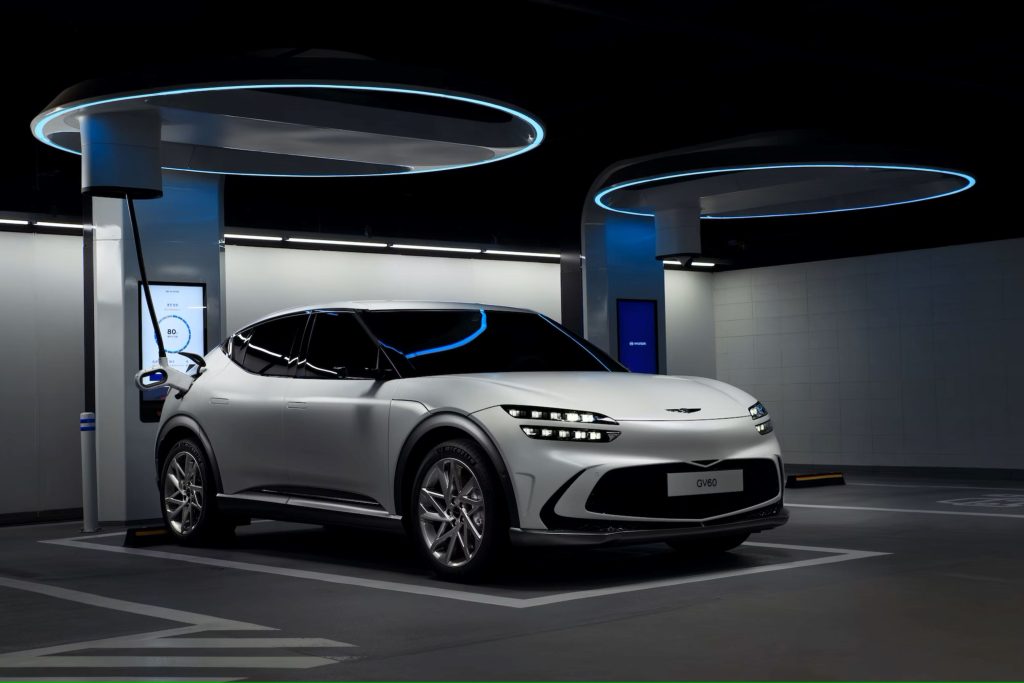Top Reasons to Drive an Electric Vehicle
*We may earn a commission for purchases made using our links. Please see our disclosure to learn more.
As an eco-friendly enthusiast, I’ve always been on the lookout for ways to reduce my environmental impact. One significant step I’ve taken is embracing electric vehicles (EVs) as my primary mode of transportation. Not only have I reduced my carbon footprint, but I’ve also enjoyed numerous other benefits that come with driving an electric vehicle. In this article, I’ll share my top reasons to drive an Electric Vehicle over a traditional gas-powered car.
The Green Revolution: Embracing Electric Vehicles
In a world where environmental concerns are at the forefront, driving an electric vehicle is a substantial stride towards a greener planet. EVs are undoubtedly an eco-conscious choice, and here’s why:
Lower Environmental Impact
One of the top reasons to drive an Electric Vehicle is the significant reduction in environmental impact. Traditional gasoline vehicles emit harmful pollutants into the atmosphere, contributing to air pollution and climate change. EVs, on the other hand, produce zero tailpipe emissions. This means cleaner air and a healthier planet.
Electric vehicles have the potential to reduce greenhouse gas emissions significantly. While it’s true that the electricity used to charge EVs can come from fossil fuels, the overall emissions from an EV are still lower than those of a conventional gasoline vehicle. Plus, as the grid becomes cleaner with the integration of renewable energy sources, the environmental benefits of EVs will only increase.
Economic Savings
Beyond the environmental benefits, driving an electric vehicle also brings financial advantages, here are the top reasons to drive an Electric Vehicle in terms of economic savings :
Government Incentives
Many governments offer incentives to encourage the adoption of electric vehicles. These incentives can include tax credits, rebates, and reduced registration fees. By going electric, I’ve not only reduced my carbon footprint but also enjoyed these financial perks.
For instance, in the United States, the federal government offers a tax credit of up to $7,500 for the purchase of an electric vehicle. Some states offer additional incentives, making the initial cost of an EV more competitive with traditional cars. These incentives not only help reduce the cost of buying an EV but also contribute to the overall economic savings over the vehicle’s lifespan.
Instant Torque and Smooth Ride
Electric vehicles are known for their impressive acceleration due to their instant torque. It’s like having a sports car experience in an eco-friendly vehicle. The smooth and quiet ride adds an element of luxury to the driving experience that’s hard to match in traditional cars.

EVs offer a unique driving experience due to their electric motors. Unlike gasoline engines that need to rev up, electric motors provide instant torque, delivering powerful and smooth acceleration from a standstill. This means you can effortlessly merge onto highways or overtake slow-moving traffic with ease.
The smooth and quiet ride of electric vehicles is often compared to gliding on the road. With minimal noise from the electric motor and no gear shifts, driving becomes an exceptionally peaceful experience. The absence of the rumbling engine that characterizes traditional cars adds to the tranquility and pleasure of your journey.
Low Maintenance Costs
EVs have fewer moving parts compared to internal combustion engine (ICE) vehicles. This translates to lower maintenance costs. No oil changes, no transmission fluid, and no exhaust system repairs. It’s a win-win for your wallet and the environment.
With fewer moving parts, electric vehicles require less maintenance. There are no oil changes, and the absence of a traditional exhaust system eliminates the need for exhaust-related repairs. Furthermore, electric motors are known for their durability and longevity, meaning you won’t have to worry about engine-related issues that can be costly to fix.
In terms of brake maintenance, EVs often feature regenerative braking, which reduces wear and tear on the brake pads. Regenerative braking converts the kinetic energy back into electricity when you lift your foot off the accelerator or apply the brakes. This feature not only saves your brakes but also contributes to the efficiency of your vehicle.
Quiet and Peaceful Driving
Driving an EV is like experiencing the tranquility of the open road. They are incredibly quiet, which makes for a more peaceful and enjoyable journey. Say goodbye to the noisy rumble of a gasoline engine.
The quiet operation of electric vehicles is a welcome change for anyone accustomed to the noise of internal combustion engines. When you drive an EV, you’ll immediately notice the difference. It’s as if the cacophony of a traditional engine has been replaced with a gentle hum, if not near silence.
This quietness not only enhances your driving experience but also benefits those around you. You’ll no longer be contributing to noise pollution, making electric vehicles a more considerate choice for urban environments. Additionally, the tranquility inside the car allows you to enjoy conversations, music, and the sounds of nature without the interference of a noisy engine.
Energy Independence
The other top reasons to drive an Electric Vehicle is also they contributes to a more energy-independent future:
Advanced Technology
Electric vehicles are at the forefront of automotive technology. With features like regenerative braking, autonomous driving capabilities, and over-the-air updates, they offer a glimpse into the future of transportation.
Electric vehicles are not just about going green; they are about going high-tech. Many EVs come equipped with advanced features and technology that enhance the driving experience. Here are a few notable examples:
- Regenerative Braking: As mentioned earlier, regenerative braking is a technology that captures energy typically lost as heat during braking and converts it into electricity. This not only enhances energy efficiency but also contributes to extended battery life.
- Autonomous Driving: Many EVs feature advanced driver-assistance systems (ADAS) that lay the foundation for autonomous driving. Features like adaptive cruise control, lane-keeping assist, and self-parking systems are not only convenient but also enhance safety.
- Over-the-Air Updates: Just like your smartphone, some EVs receive over-the-air updates to improve performance, add new features, and enhance security. This means your vehicle can become even better over time.
Expanding Charging Infrastructure
The charging infrastructure for EVs is rapidly growing. From public charging stations to home chargers, it’s becoming more convenient than ever to keep your EV powered up. I’ve found it incredibly convenient to charge my vehicle at home, ensuring it’s always ready for my daily commute.
One common concern for prospective EV owners is access to charging infrastructure. Fortunately, this concern is rapidly diminishing as the charging network expands. Here are some key points regarding charging infrastructure:
- Public Charging Stations: Cities and highways are seeing a proliferation of public charging stations, making long-distance travel with electric vehicles more practical. These stations offer various charging speeds, including fast-charging options that can significantly reduce charging times.
- Home Charging: Home charging is one of the most convenient and cost-effective ways to ensure your EV is ready for daily use. You can plug in your vehicle overnight, and it will be fully charged and ready to go in the morning. Many governments offer incentives for installing home charging stations, further encouraging EV adoption.
- Workplace Charging: Some companies now offer workplace charging stations, allowing employees to charge their EVs while at work. This convenience eliminates the need to rely solely on home charging.

Reducing Carbon Footprint
The transportation sector is a significant contributor to greenhouse gas emissions. the other top reasons to drive an Electric Vehicle is it reduce carbon footprint. It’s a small but impactful step toward combating climate change.
The environmental benefits of electric vehicles extend beyond their zero tailpipe emissions. The reduction in greenhouse gas emissions is particularly crucial in the fight against climate change. Here’s how EVs contribute to reducing the carbon footprint:
- Reduced Greenhouse Gas Emissions: As mentioned earlier, electric vehicles produce zero tailpipe emissions, which means they don’t release pollutants like carbon monoxide and nitrogen oxides. This helps improve air quality and reduces the health risks associated with air pollution.
- Increased Energy Efficiency: Electric vehicles are inherently more energy-efficient than traditional gasoline vehicles. The energy conversion from electricity to motion is more efficient than the energy conversion from gasoline to motion. This means that even when considering the energy used to produce electricity, EVs still have a lower overall carbon footprint.
- Renewable Energy Compatibility: EVs can be charged with electricity generated from renewable sources like wind or solar power. Using green energy to charge your electric vehicle further reduces its environmental impact.
A Look into the Future
Electric vehicles are not just a trend; they are the future of transportation. As more automakers invest in EV technology, we can expect a wider range of choices, more affordability, and improved performance.
The automotive industry is undergoing a significant transformation as electric vehicles become more prevalent. Here’s what the future of EVs looks like:
- Expanding Model Range: More automakers are introducing electric models, offering consumers a diverse range of options, from compact EVs to luxury electric SUVs. This increasing variety caters to various preferences and budgets.
- Improved Affordability: As technology advances and economies of scale come into play, electric vehicles are becoming more affordable. This makes them accessible to a broader range of consumers.
- Enhanced Performance: Electric vehicles are known for their impressive acceleration. With ongoing advancements in battery technology and electric motors, future EVs are expected to offer even more powerful and efficient performance.
- Charging Innovations: Innovations in charging technology are continually improving. Fast-charging stations, wireless charging, and improved battery management systems are making charging more convenient and efficient.
Overcoming Range Anxiety
One common concern about electric vehicles is range anxiety. However, with advancements in battery technology, many modern EVs can cover impressive distances on a single charge. Range anxiety is becoming a thing of the past.
Range anxiety, the fear of running out of battery power before reaching your destination, has been a significant barrier to electric vehicle adoption. However, recent advancements in battery technology have made significant strides in mitigating this concern:
- Increased Range: Modern electric vehicles offer impressive ranges on a single charge. Some high-end EVs can travel over 300 miles on a single charge, making long journeys more feasible.
- Charging Infrastructure: The expansion of charging infrastructure means that charging options are more accessible, even on long trips. Fast-charging stations can provide a substantial amount of charge in a short time, allowing you to continue your journey with minimal delays.
- Real-World Data: Real-world data from EV owners has shown that range anxiety is often less of a concern than initially anticipated. Most daily commutes and errands can be comfortably completed on a single charge, reducing the need for frequent recharging.
- Trip Planning Apps: Many electric vehicles come with integrated trip planning apps that help you locate charging stations along your route, further reducing range anxiety.
- Battery Technology: Ongoing research and development in battery technology are continuously improving energy density and charging speeds, making electric vehicles even more practical for daily use and long-distance travel.
Conclusion
In my journey as an eco-friendly enthusiast, there are so many top reasons to drive an Electric Vehicle. Not only have I significantly reduced my environmental impact, but I’ve also experienced the economic benefits, advanced technology, and the thrill of a quiet and peaceful ride. The world is shifting towards a greener future, and electric vehicles are leading the way.
As I look ahead, I see an even more promising landscape for electric vehicles. With expanding charging infrastructure and ongoing improvements in battery technology, the future is bright for those who choose to go electric.
So, if you’re contemplating a switch to an electric vehicle, don’t hesitate. Embrace the green revolution and take the wheel of a sustainable and exciting future.
FAQs (Frequently Asked Questions)
Q1. Are electric vehicles more expensive than traditional cars?
No, electric vehicles have become more affordable, and the long-term savings on fuel and maintenance can offset the initial purchase price.
Q2. How far can electric vehicles travel on a single charge?
The range varies depending on the model, but many modern EVs can cover over 200 miles on a single charge.
Q3. Is it difficult to find charging stations for electric vehicles?
Charging infrastructure is rapidly expanding, making it easier to find charging stations in most urban areas.
Q4. What is the environmental impact of manufacturing EV batteries?
While battery production has an environmental impact, the overall emissions reduction from driving an EV outweighs this impact over the vehicle’s lifetime.
Q5. Do electric vehicles require special maintenance compared to traditional cars?
Electric vehicles generally have lower maintenance requirements because they have fewer moving parts and no need for oil changes or exhaust system repairs.




